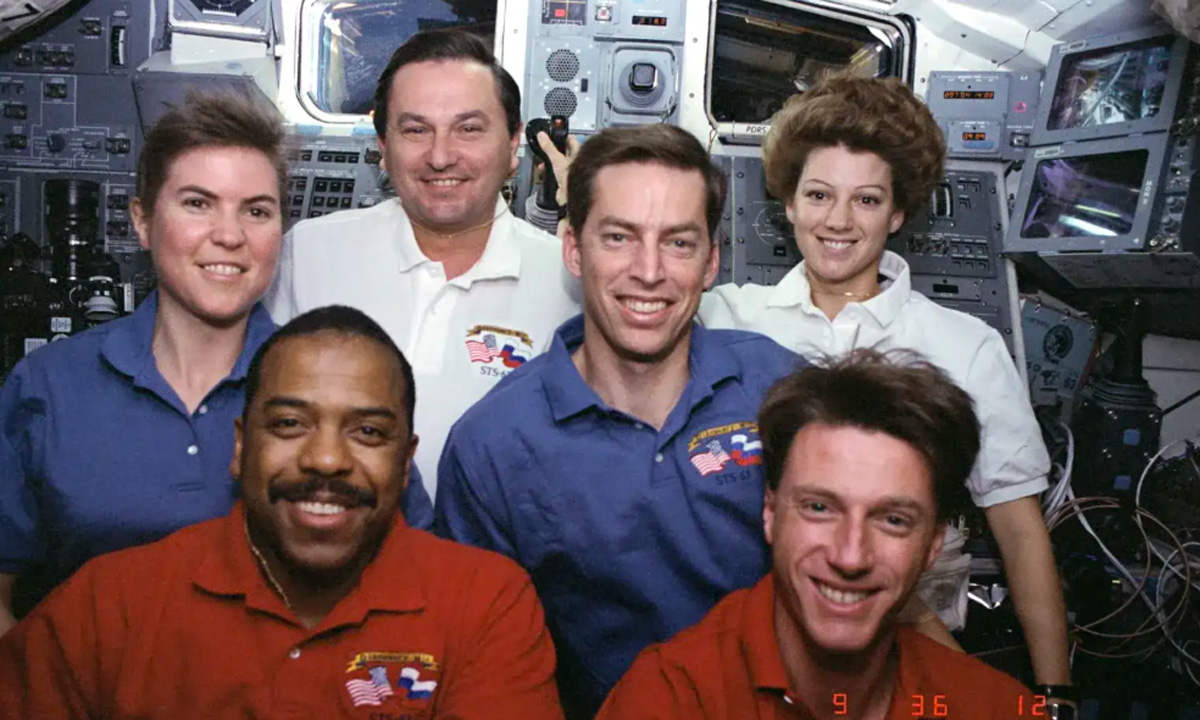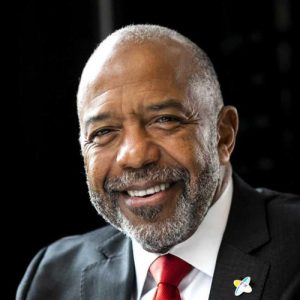Changing the Face of STEM — and Helping Black Students Aim for the Stars
Harris: As a Black astronaut, I know innovation depends on diversity. We must foster future leaders in science, technology, engineering & math.

Get stories like this delivered straight to your inbox. Sign up for The 74 Newsletter
March is National STEM Month — a time to celebrate innovation and inspire future scientists, engineers and innovators. As teachers look to the future of STEM education, schools must ensure that students from all backgrounds have the opportunity to pursue their STEM dreams.
For Black students, in particular, the path to STEM careers has often been hindered by a lack of representation and access. Growing up, I didn’t see many people who looked like me in science or technology, and the path forward was often unclear. But through perseverance, resilience and a deep belief in my ability, I succeeded. I believe that regardless of background, students deserve access to high-quality STEM education. Now, as a physician, former astronaut and advocate for equity in STEM, I am committed to breaking down the barriers I once faced and creating opportunities for the next generation.
STEM fields have historically lacked Black student representation, and while progress has been made, there is still more work to do. In industries like aerospace and medicine, Black professionals are still significantly underrepresented — not because of a lack of talent, but because of limited access, mentorship and encouragement. The numbers are staggering: A recent McKinsey study shows that it will take Black Americans more than three centuries to achieve the same quality of life as white Americans. This gap is not just about economics — it’s about opportunity.
The key to overcoming these hurdles comes down to this: Students need to see themselves in STEM. They need to know that their dreams are not only valid, but achievable. I was lucky. I had strong influences in my life, including my family physician, who inspired me to pursue STEM and pushed me forward, along with my mother, who was a teacher and exposed me to the importance of education from an early age. But most Black students don’t have that chance. That’s why systemic change is essential.
Through my work with the National Math and Science Initiative, where I served as a founding board member in 2007 and CEO from 2018 to 2021, and the Harris Foundation, which I founded in 1998, I’m focused on giving all students the confidence and resources they need to succeed in STEM. This isn’t just about inspiring young people — it’s about creating concrete pathways to help them to excel.
The initiative plays a pivotal role in making STEM education more inclusive and accessible, particularly for students from underserved communities. Its approach centers on providing high-quality professional development to teachers, equipping them with the skills to foster engaging and supportive classrooms. Teachers who are trained through the initiative’s programs are better able to connect with all students and build their confidence, helping them see that STEM is a field where they can thrive.

Advancing STEM education has been at the forefront of the initiative’s work since its inception in 2007. Now, 18 years later, it has reached over 2.9 million students, 72,000 teachers and 1,800 high schools by expanding access to rigorous STEM coursework and college-level preparation. Through partnerships with schools and districts, the initiative works to increase access to Advanced Placement STEM courses while ensuring that students — especially those furthest from opportunity — have the support they need to succeed in those classes, opening doors to STEM careers for the nation’s future innovators.
A recent West Coast Analytics report evaluating the initiative’s Professional Development Services found that students taught by teachers who have gone through this training showed significant gains in confidence and interest in STEM subjects. Notably, Black students demonstrated a remarkable increase in STEM career aspirations. This was measured through student surveys, where thousands of participants answered questions about their confidence in STEM subjects and interest in future STEM careers.
Beyond the classroom, mentorship plays a crucial role in encouraging Black students to pursue STEM careers. Through the Harris Foundation, my team and I connect students with Black STEM professionals who can guide them, offer advice and open doors to networking. My team also provides scholarships, internships and leadership programs tailored specifically to Black students, helping to bridge the gap between education and career.
For example, the Bernard Harris Math and Science Scholarship awards four Black and Hispanic high school seniors from Council of the Great City Schools member districts $5,000 each to pursue a STEM degree at a four-year college or university. I also created the DREAM Tour (Daring to Reach Excellence for America’s Minds) in partnership with ExxonMobil, which encouraged thousands of middle school students to recognize their potential and develop strong math and science skills. My team and I even made a brief tour of Africa, visiting schools in Angola, Nigeria and South Africa. The tour featured interactive programs, high-tech performances, discussions of goal-setting and STEM careers, and the opportunity for students to experience a simulated Space Shuttle launch. Exposure to real-world professionals and experiences is critical to shaping students’ futures, which is why I’ve built partnerships with industries to ensure that students can gain hands-on experience and mentorship.
Another key priority in advancing STEM education is removing systemic barriers that have historically limited Black students’ success. Research shows that well-structured, sustained professional development for educators can lead to better student outcomes by improving instruction and fostering interest in STEM careers. Investing in high-quality educator training is a proven way to create lasting change, equipping teachers with the tools to close achievement gaps, inspire students and expand access to STEM opportunities for underserved communities.
Building an equitable education system that empowers all students is essential to our country’s future— and that starts with a commitment to diversifying STEM fields. When Black students are supported and given the resources they need, they not only thrive — they help move society forward.
Innovation depends on diversity; without equitable access to STEM education, everyone will feel the impact. The time to invest, mentor and uplift the next generation of Black STEM leaders is now.
Get stories like these delivered straight to your inbox. Sign up for The 74 Newsletter

;)
